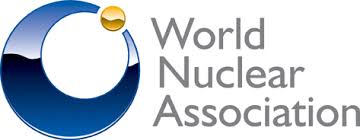Nuclear Reactors 306 - Russian Plans To Improve The World Nuclear Fuel Cycle - Part 1 of 2 Parts.
Part 1 of 2 Parts
Many agencies and individuals concerned about climate change say that we must find a way to limit average global temperature increase to two degrees Centigrade or less if we hope to avoid severe consequences. Nuclear industry organizations such as the International Energy Agency and the World Nuclear Association support the expansion of nuclear power plants to help achieve that goal.
JSC Tenex is a subsidiary of Rosatom, the Russian nuclear company. Tenex is the “nuclear fuel cycle product supplier” for Rosatom clients. At the World Nuclear Association annual conference in London last week, the general director of JSC Tenex said that a new nuclear fuel cycle was necessary to support the growth of global nuclear energy. The new cycle she proposed focuses on reprocessing and recycling of used nuclear fuel. This will allow uranium and plutonium to be utilized to the fullest extent possible while also reducing the amount of nuclear waste that is generated. She criticized current nuclear fuel cycles and said that they faced many challenges and were not an optimal use of nuclear fuel.
Currently, most nuclear power plants are using the deferred solution of temporary interim storage of spent nuclear fuel because permanent storage or robust recycling alternatives are not available. The Tenex Director said that reprocessing technology that is available is inefficient and the use of reprocessed uranium and plutonium is also inefficient. This is the reason that some of the major companies involved in nuclear power production have suspended reprocessing. International projects to promote reprocessing have faced barriers and delays. “Industry needs a new nuclear fuel cycle based on innovative solutions and integrated approaches,” she said.
It is estimated that by 2050, a million tons of spent nuclear fuel will exist. If uranium and plutonium were extracted via reprocessing from that spent fuel, there would be enough new fuel created to fuel one hundred and forty one gigawatt light water reactors for sixty years.
The new nuclear fuel cycle required by future expansion of nuclear power generation must reduce the amount and danger of spent nuclear fuel. In addition it must promote the use of fissile materials that can be recovered by reprocessing. One important concern that must be addressed is the danger of the use of reprocessed uranium and plutonium for nuclear weapons. The new fuel cycle must address these non-proliferation concerns.
The new fuel cycle should include mandatory reprocessing and the separation of high level wastes so that separate processing of different fissile materials will be facilitated. Reprocessed uranium and plutonium would be used to create new fuel for reactors. Minor actinides that are generated by the fission reaction could be “burned” in fast reactors which would reduce the amount and toxicity of waste. Other fission products could be used for sources for useful radioisotopes for medicine and industry.
Rosatom claims that the current closed fuel cycle for nuclear power plants in which uranium and plutonium are only used once utilizes at best about twenty one percent of used light water reactors fuel. The remaining seventy nine percent consists mostly of U-238. This remainder then goes into temporary storage to await the development of permanent spent nuclear fuel repositories.
Please read Part 2
